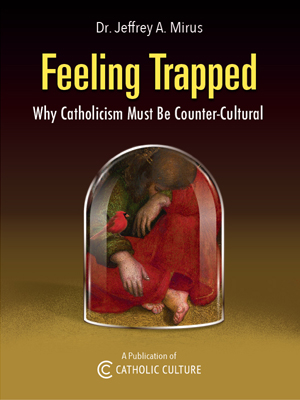Catholic Recipe: Frangipane Cream I
Also Called: frangipani
From his early biographers we learn a charming incident in the life of the Little Poor Man of Assisi which deals with food even for this most abstemious of saints.
It was in the year 1212 that Saint Francis became acquainted with a young woman of the Roman nobility, Lady Jacoba di Settesoli, widow of the knight Gratiano Frangipani. The name Frangipani had been given the family because an ancestor had saved the Raomn people from famine by giving them bread — hence the name Frangens panem.
Jacoba, a very devout woman and noted for her great generosity, often gave lodging to the Poverello when he came to Rome. So impressed was he with the energy and the capability of his friend that he called her "Brother Jacoba," by which title she passed to posterity. She not only saw that Francis' clothing was in decent order, but she served in her home a sweetmeat of which he was very fond. Frangipane it was called in later years — a concoction of almonds and sugar, for which the saint expressed perhaps the only compliment on cooking in his life.
Because Brother Jacoba was so good to him, Francis gave her a lamb which he had cherished and allowed to accompany him about, in honor, says Saint Bonaventrus, of Our Lord Jesus Christ, the gentle Lamb of God. The lamb adopted Jacoba in the same way and "it would follow its mistress to church, lie down near her when she prayed, and return home with her. If Lady Jacoba overslept in the morning, the lamb would come to awaken her and would bleat in her ear to compel her to go to her devotions."
When he lay dying, Saint Francis thought of Brother Jacoba. "She would be too sad," he said to Brother Bernard, "to learn that I had quitted the world without warning her." and he dictated a letter, telling her the end of his life was near, that she was to set out as quickly as possible for Assisi to see him once more, and to bring with her a piece of haircloth as a shroud for his body and whatever else was necessary for his burial. "Bring me also," he needed, "I beg thee, some of those good things thou gavest me to eat in Rome when I was ill."
But the letter was barely finished and still unsent when the noise of horses was heard. Jacoba entered with her two sons and her servants, having been inspired to set out for Assisi from Rome. When one of the Brothers told Francis he had good news and before he could say more, Francis spoke. "God be praised. Let the door be opened, for the rule forbidding women to enter here is not for Brother Jacoba."
She had brought everything he needed — the veil for his face, the cushion for his head, the haircloth, the wax for the watching and funeral ceremonies. And she had brought also some of the almond sweetmeats he loved. He tried to eat them, but found he could take only a taste and he gave the rest to Brother Bernard.
Today we know Frangipane as a sweet almond cream flavored with red jasmine extract or a similar essence. It is used as a filling for cakes.
DIRECTIONS
Stir the eggs and egg yolks and add the sugar mixed with the flour and salt. Slowly stir in the scalded milk and continue stirring over a slow fire until the mixture thickens. Remove, add the vanilla extract, the macaroons which have been finely crushed, and the butter. Stir from time to time so that the cream is cold before using. (Red Jasmine extract is most difficult to come by, but should any reader be most fortunate enough to procure some, 6 drops may be added.)
Recipe Source: Feast Day Cookbook by Katherine Burton and Helmut Ripperger, David McKay Company, Inc., New York, 1951






